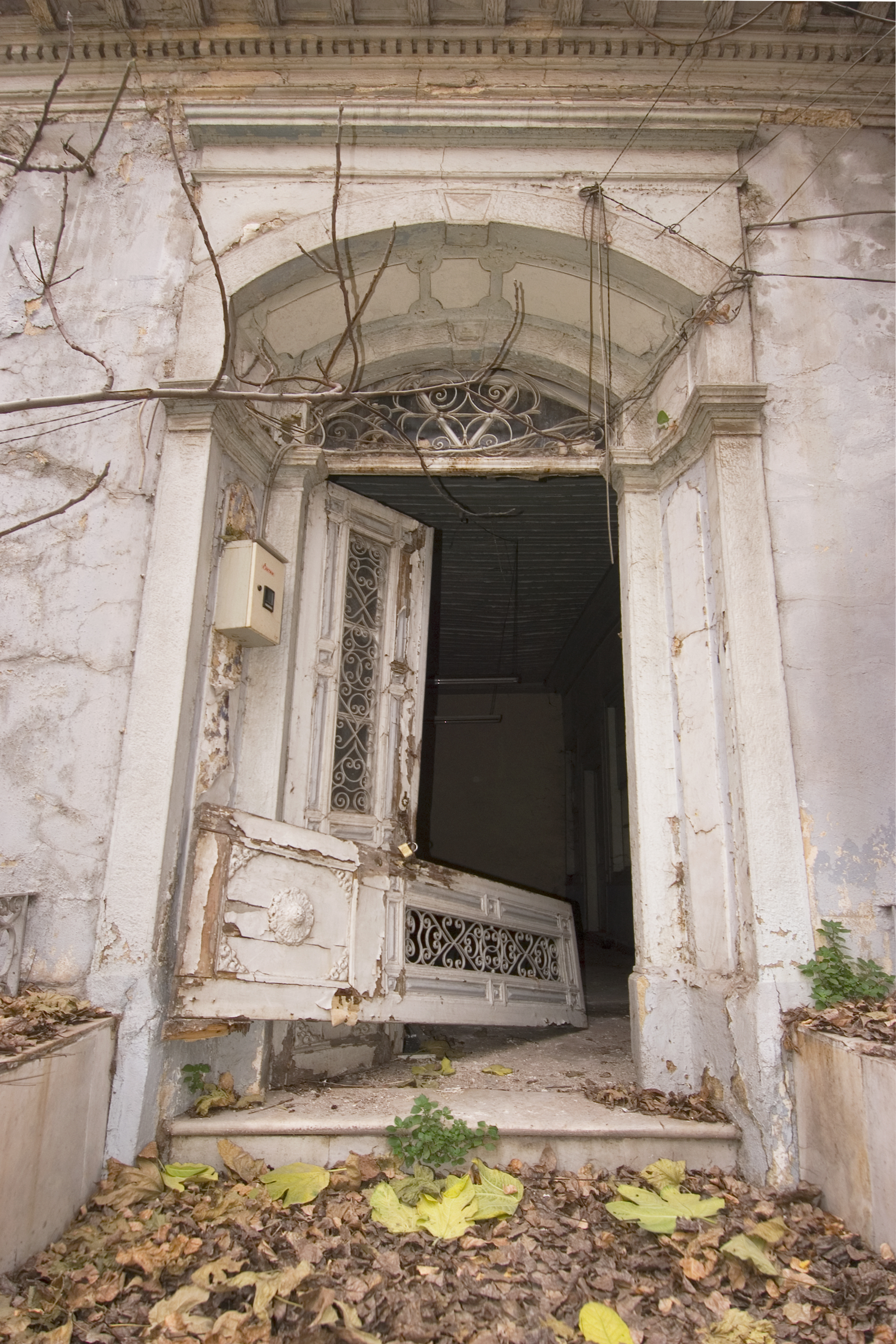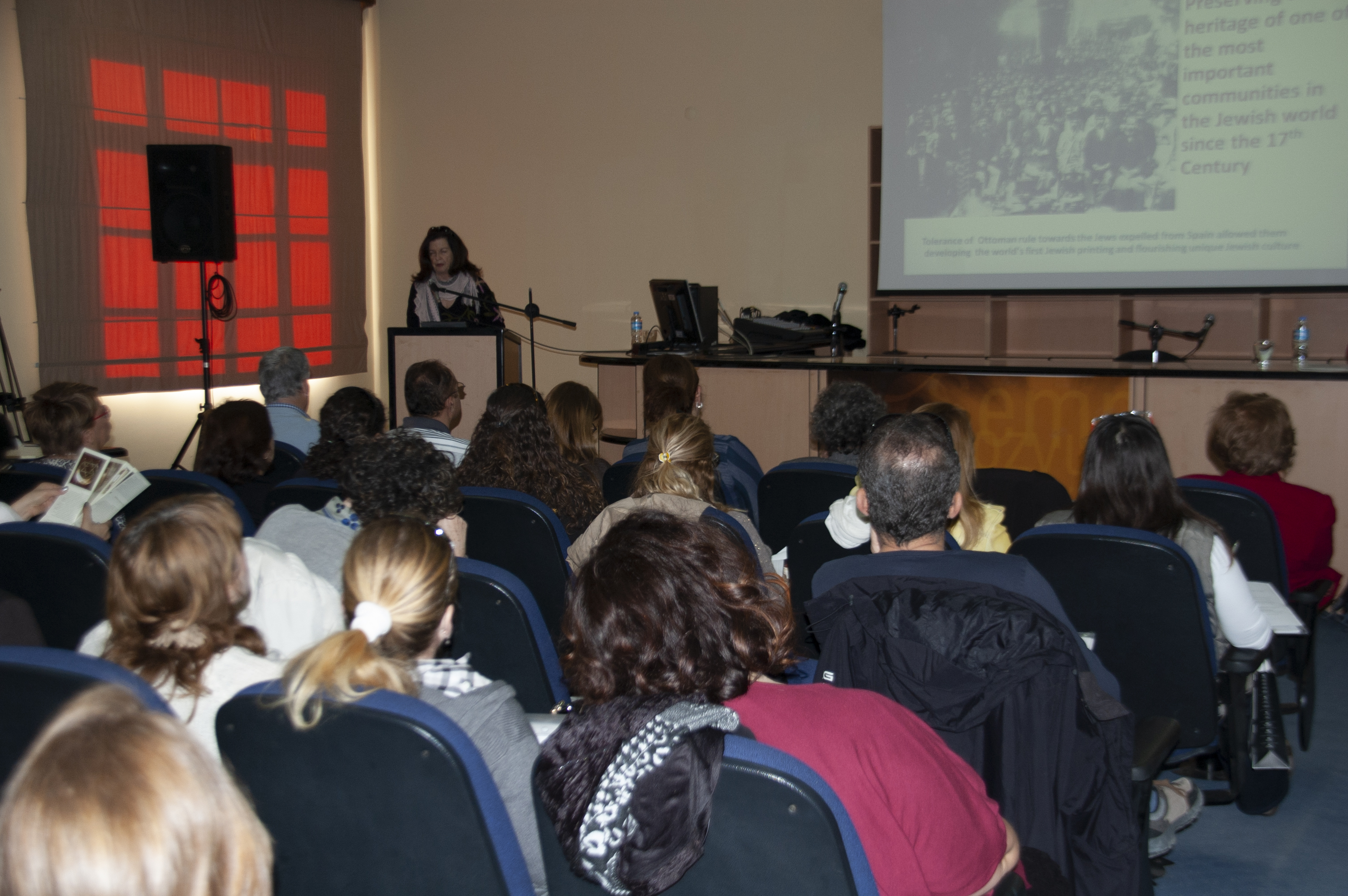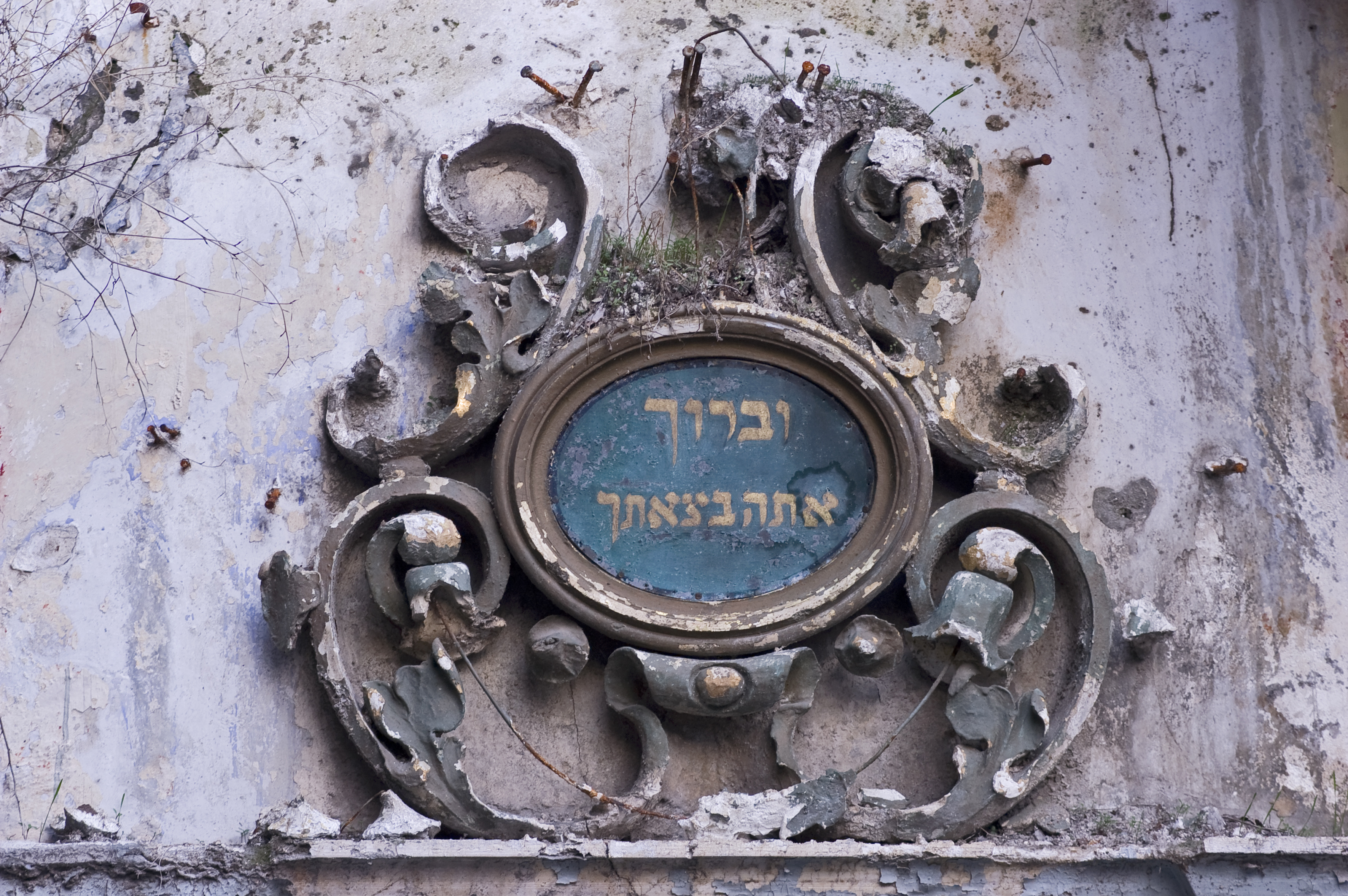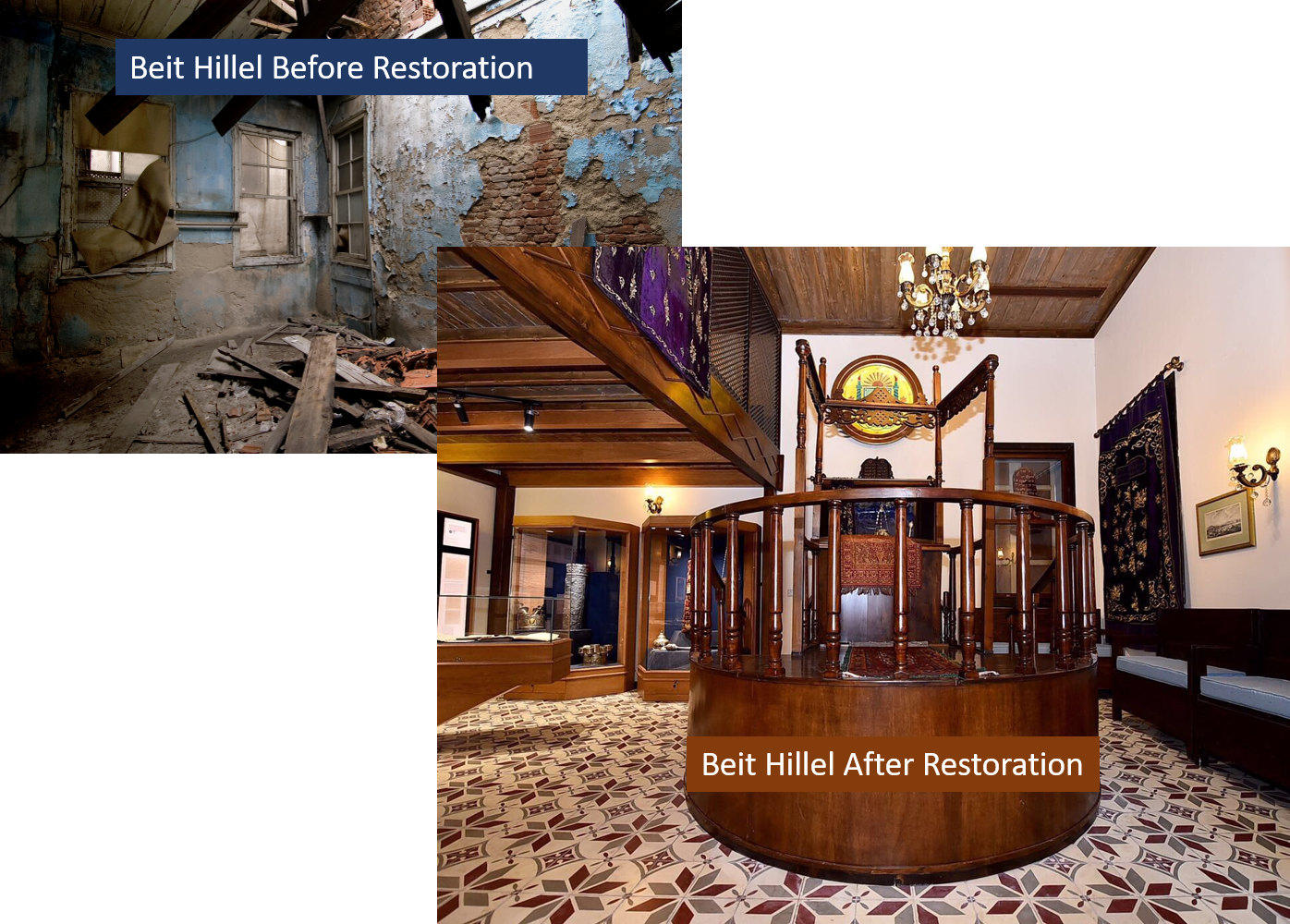Meet ms. Judith Kiriaty-Matalon, the president of the Kiriaty Foundation (The Izmir Synagogues Project)
"I marveled at the attitude of the Ottoman Empire to those Jews who were given the option of free religious worship at those times."
What is the Kiriaty Foundation and The Izmir Project?
Kiriaty Foundation is an international foundation established for supporting various educational and cultural projects.
The Kiriaty Foundation, initiated with Izmir's Jewish community, the restoration and preservation of Izmir's Ancient Synagogues with the aim of reviving the heritage of Sephardic Jews (Jews originated in Spain and expelled on 1492). The end goal of this project is establishing a Visitor Center and a museum of Sephardic Jewish tradition and its manifestation in the Ottoman Empire and modern Turkey as an intercultural dialogue intercultural respect and co-creation between Muslims and Jews. All this with the support of various international organizations and local Turkish authorities.
The history of the Izmir ancient synagogues
In the old city of Izmir, there is a unique complex of 10 buildings, of which 9 are ancient synagogues, built by Jews expelled from Spain more than 400 years ago. Together they constitute a district of ancient synagogues, that nothing similar to this exists anywhere else in the world.
The Jewish religious and spiritual life in medieval Spain was highly advanced and was leading the Jewish world at that time. This was destroyed by the Catholic Inquisition and the king and queen of Spain Ferdinand and Isabella and later on by the king of Portugal. They expelled all the Jews who refused to convert to Christianity. They destroyed any former physical Jewish presence in Spain including all the Jewish buildings and synagogues, changed their purpose and character and some were even becoming churches. Izmir's Jewish quarter with its magnificent Sephardic style synagogues is a true reminiscence of this unique Jewish Spanish heritage due to religious worship freedom granted by the Ottoman Empire.
- The Ottoman Empire opened its gates to the deportees of Spain and allowed them, unlike some of the Catholic countries, free religious worship without fear.
- In contrast to the Inquisition that destroyed traces of Jewish heritage in some of the Catholic countries, the Ottoman Empire was tolerant toward minorities living in its territory and allowed complete freedom of religious worship for Jews.
- The Nazis regime destroyed any physical Jewish presence in occupied Europe.
- The new Turkish Republic created after WW1 continued to allow Jews religious and civil freedoms.
Kiriaty Foundation
After the Izmir Ancient Synagogues were declared by the World Monument Watch as an international heritage site at risk, the Kiriaty Foundation decided to initiate, together with the Izmir Jewish community, an international project for preserving the ancient synagogues of Izmir, establishing there a Visitor Center and a Sephardic Jewish heritage museum with emphasis on respect between Muslims and Jews, a place for intercultural and inter-religious dialog. This future endeavor will take place within the area of the Izmir synagogues, and will become an inspiration for intercultural respect and understanding for future generations.

To promote the project, the Kiriaty Foundation has positioned it internationally, and initiated ongoing collaborations to date with worldwide international cultural and heritage conservation organizations. Organizations such as AEJM, AEPJ, The Foundation For Jewish Heritage, the U.S. Ambassadors Fund, etc... including local Turkish institutions who help preserve cultural heritage such as: IZKA and Tarkem.
All this with 'close collaboration with the municipal authorities in Izmir, the Izmir Chamber of Commerce and the Ministry of Culture in the government of Turkey.

Special thanks to the heads of the Jewish community, its previous president- Mr. Jack Kaya and the present acting President - Mr. Samuel Azar who helped a lot realizing this Project and to the professional team members of the Izmir Project at the Kiriaty Foundation: Mr. Nesim Ben Joya and Mr. Uri Bar-Ner who devote and destine their energy to promote and develop this project.
The Izmir Ancient Synagogues Project
Includes the following synagogues:
Etz Haim,
Hevra (Talmud Torah),

Siniora,

Algazi,

Shalom,
Forestros (Kadosh),
Portugal,

Beit Hillel,
Bikur - Holim,

and the Ancient Rabbinate House.

The main actions taken within the project were to rescue and restore the ancient synagogues in ruins or in danger, and preserve those in good condition. This for the sake of reviving Izmir's unique Jewish heritage. The project includes Izmir's ancient library, Judaica objects and ritual textiles.
During the past ten years, two synagogues: Beit Hillel and Portugal were restored and fully preserved as part of the project. Then initial rescue work was done to prevent the collapse of the Etz Haim Synagogue. At present, the final renovation and preservation work of the Etz-Haim Synagogue is undertaken. Rescue work also started on Hevra (Talmud Torah) Synagogue saving it from total collapse and to enable later its full restoration.
At the same time, an additional initiative was held in Izmir for the rescue of Jewish ritual textile collection found in the synagogues in a very bad condition. This rescue work including restoration, preservation and documentation was carried out by students of textile preservation from Helsinki University. It was done in collaboration with the University of Economics in Izmir. This special venture enabled the students from Helsinki to get to know both the Turkish/Ottoman unique textile art, and the special religious ceremonies that these textiles were used for, such as 'Parochot' (curtains covering the Holy Ark) coats of Torah scrolls, etc. The venture was supervised by international experts leading the preservation work in a way that it will allow in the future to be a part of a museum collection display.

As part of the Izmir Project, a seminar was held in Izmir for 70 tourist guides from all over Turkey, training them to guide tourists in the synagogues. The seminar facilitated by experts in the history of Izmir's synagogues, as well as Jewish Heritage tourism.

An additional seminar for 19 Judaica curators from Jewish museums throughout Europe was held in Izmir in collaboration with AEJM (Association of European Jewish Museums) exploring the details of the unique Judaica collections of Jewish Sephardic heritage in Izmir.

A tour to Prague's and Krakow's Jewish quarter and their synagogues was organized for the mayors of Izmir and Konak (Were the Izmir Jewish quarter is located) and the heads of their conservation and architecture departments. They were highly impressed by the well-preserved Ashkenazi Jewish heritage. They understood the concept of how to preserve and promote the unique Sephardic Jewish heritage of Izmir' and its beautiful synagogues. As a direct result of the visit, the mayor of Konak held the events of International Peace Day at the Siniora Synagogue in the heart of Izmir's ancient synagogue site.

As part of the project, within Izmir's ancient synagogue complex the second festival of Sephardic Jewish cultural event was hosted in 2019. The festival featured Ladino songs, Sephardic music, poetry, literature, Jewish food etc...
What is your role in this institution?
Ms. Judith Kiriaty-Matalon is the president of the Kiriaty Foundation.
What is your personal connection to the history of the Sephardic Jews from Izmir?
I have no personal connection to the history and heritage of Sepharad - Spanish originated Jewry. But when visiting for the first time these ancient synagogues I marveled at both the architectural ancient Sephardic style of these synagogues' heritage with special Ottoman architectural motifs style typical to Izmir. This was perfectly preserved in these magnificent synagogues. I was happy to realize that, unlike all that happened to Jewish heritage in some of European countries, so many amazing synagogues managed to immaculately survive one next to the other in Izmir.
I began to explore the legacy of Spanish Jews who arrived in the Ottoman Empire after 1492 the year of deportation. I marveled at the attitude of the Ottoman Empire to those Jews who were given the option of free religious worship at those times, and realized that there was a tremendous legacy of religious tolerance which is worthy of preserving and presenting as an inheritance for future generations of all religion origins.
The uniqueness of the current human composition of the European continent is in its interesting diversity of various religions, cultures and traditions.
Interfaith and intercultural dialogue, mutual creative life of different religious communities that will be presented in the museum through the story of Jewish community daily life in Izmir, - is another tier of recognizing current Europe's cultural networks, especially in our era that reveals phenomena of racism and intolerance.
As the president of a foundation which supports humanitarian, education and culture ventures, I know that there is nothing like case study example for educating the youth. Izmir synagogues and their history may offer an excellent model of mutual religious/cultural life, that is important to present to members of all religion's future generations.
What is the situation of Turkish Jewish heritage with respect to the rest of the Mediterranean countries?
In all countries of the Mediterranean basin many Jews were previously involved in commerce. They built synagogues wherever they lived. However, as mentioned before, in none of the Mediterranean countries did there exist a district of adjacent synagogues. Synagogues surrounded with such a rich Sepharad - Spanish Jewish heritage which include traditions, literary poetry, music, culinary, customs, clothing, etc. We hope to display all this in the future Visitor Center and the museum in the restored site of the ancient synagogues. Jews have never been persecuted in the Mediterranean basin countries that were part of the Ottoman Empire. Sadly, after the decline of the empire we witnessed later the destruction of Jewish heritage by the Nazis and their local collaborators.
Thanks to the help given to this project by the Turkish authorities who play a major role today in the preservation and restoration of the ancient synagogues of Izmir, we hope to establish the Visitor Center in the area of the ancient synagogue site in Izmir. This we hope will be a highly demanded international tourism attraction.
What is the role of the Jewish Heritage in the Mediterranean nowadays in your opinion?
After the destruction of the Holly Temple in Jerusalem and the exile of Jews from Israel -their origin land, by the Roman Empire, Jews lived in the Mediterranean basin for 2000 years. After 1492-the year of expulsion from Spain, Jews were dispersed even more, establishing new Sepharad - Spanish Jewish communities and assisted maritime trade between Mediterranean basin countries. Most Jewish communities in the Mediterranean basin consists of descendants of Sephardic Jewish deportees, who brought with them many unique customs and cultural heritage. To this day, this special heritage is different from the Ashkenazi Jewish heritage of Central and Eastern Europe.
However, unlike the heritage of Ashkenazi Jewry that was widely distributed and recognized in the whole Jewish world, much of the glorious Sephardic -Spanish Jewish heritage did not receive the same recognition in the Jewish world. In this context, there is no doubt that Sepharad - Spanish Jewish communities in the Mediterranean basin play an important role in preserving this Sephardic - Spanish Jewish heritage with the aim of regaining recognition in the Jewish world of this heritage and its roots,
Tell us an anecdote: Which activity do you remember most warmly and why?
I had many excited experiences during this project but the most exciting and formative personal experience that happened to me took place in the Etz Haim Synagogue.
At the beginning of the rescue work preventing the collapse of the Etz-Haim Synagogue, which preceded its restoration and preservation work, a prosthetic plaster ceiling was removed from the ground floor below the synagogue, which was previously used as a warehouse and was rented to a souvenir shop. When I came to see the original state of the ceiling, I discovered to my surprise an ancient wooden ceiling, some of which is decorated with wood carvings with paint decorations at the connecting areas of the walls with the wooden ceiling. I stood there for a long time and watched the shape of the building before my eyes, wondering to myself why they bothered decorating the ceiling and walls of a hall that serves as a warehouse? So, I wondered if there might have been another synagogue underneath the now-renovated synagogue? I immediately called a specialist in the history of Izmir's ancient synagogues which made it clear to me that we had just discovered the oldest Romaniote Synagogue in Izmir dating from the Byzantine period.
In examining historical resources, it turned out that the same synagogue we discovered under the Etz Haim synagogue served the Romaniote Jews who arrived and lived there after the destruction of the Holly Temple and Jerusalem by the Romans, this many years before the expulsion from Spain. The tradition says that when the first Muslims concurred Izmir and had no place to pray, the Romaniote Jewish community invited them to pray in this Romaniote synagogue until they built their first Mosque in Izmir.
It was undoubtedly an exciting discovery, which led me to conclude that this was the ideal place to set up the museum for interfaith dialog and intercultural understanding.
When did you start to be part of AEPJ and what has it brought you since then?
We were accepted as members of the AEPJ about two years ago. Our membership in the AEPJ introduces us to many members who cherish the Jewish heritage and culture in greater Europe. The mission of the AEPJ is very similar to what we do in Izmir.
This allow us exchanging ideas how to promote the preservation of the unique Jewish culture of Izmir, turning it to a highly attractive and demanded tourism site.
The opportunity our AEPJ membership is giving us to connect with other Jewish communities with similar challenging goals, the collaborations we make, help us create new initiatives. One is the idea creating the "Deportation-Mediterranean Path, The AEPJ focus on creating tourism routes of Jewish culture in Europe made us decided to work with others on the "Deportation Mediterranean Route" initiative.
The expulsion of Jews from Spain and Portugal was the most traumatic experience for the entire Jewish world of the time, deeply engraved in the historical memory of the Jewish people.
Therefore, I propose to hold a Mediterranean Jewish Route that will allow tourists in the 21st century to experience the deportation. A route that will departures from Spain and will visit various port cities in the Mediterranean basin where Sepharad - Spanish Jewish communities still exist. This tour will end in Izmir. This route will allow the traveler to get to know the important Jewish ancient Sepharad cultural heritage.
Starting the deportation route will be in recognizing the causes of the deportation from Spain as a monumental traumatic act of racism and lack of tolerance. It will lead to better knowledge and understanding of this Sepharad heritage the deportees brought with them to various Mediterranean port cities. The Mediterranean basin voyage will end at the Izmir Jewish Visitor Center and the future museum of tolerance, and multicultural dialogue and interfaith respect.
It should be a formative experience of living heritage for future generations. We hope that with the help of the AEPJ this initiative will be realized.
What challenges do you have ahead of you for this year?
The challenges we face until the end of this 2020 year are:
- Finishing the restoration and preservation of Etz Haim Synagogue, which include also the completion of the restoration and preservation of the Romaniote ancient Synagogue beneath it.
- Continuing the rescue of Hevra (Talmud Torah) Synagogue. To keep it safe from total collapse and to allow later on its full restoration.
- Completion the conceptual program of the Visitor's Center and Museum of Tolerance, Interfaith understanding and Intercultural Dialogue on the site of the ancient synagogues, together with the exhibition of the history of the Izmir Jewish community and its unique Sephardic Jewish heritage and its integration in the Ottoman Empire. This is to enable the establishment of the synagogues Visitor Center and the future museum designed according to the conceptual program.
- Preparing a Jewish Heritage Tourism Route to recognize the Sephardic Jewish heritage of Izmir as part of the story of the year 1492 Jewish deportation from Spain.










